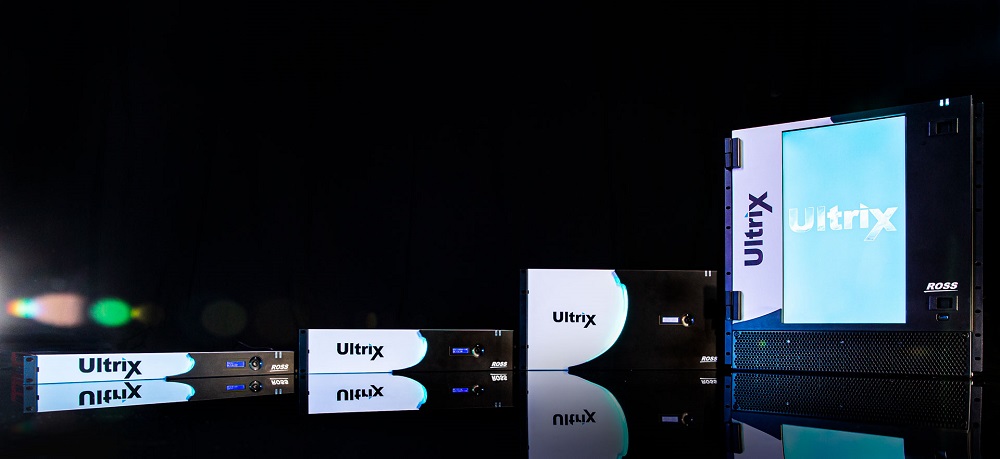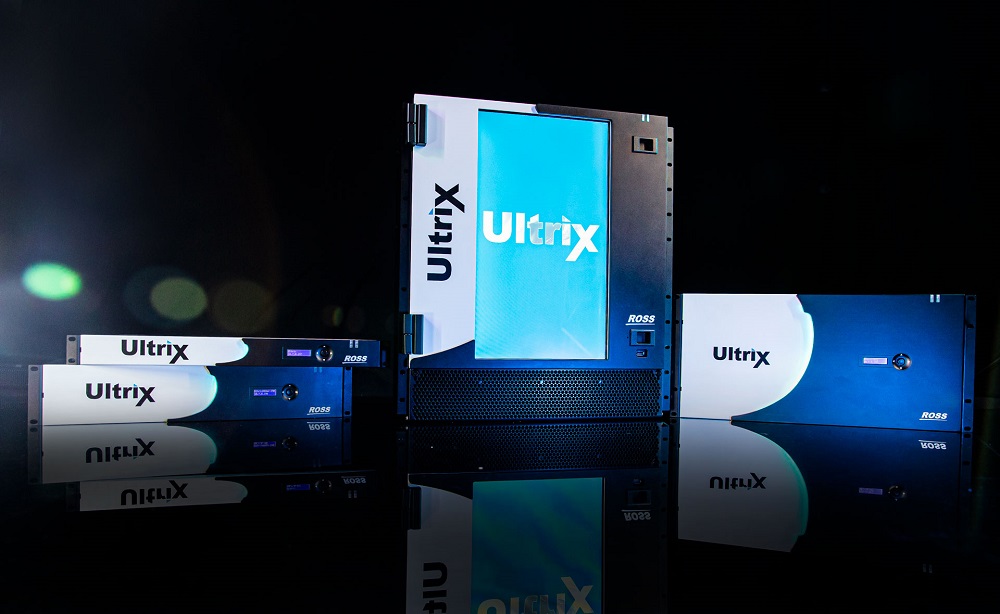By Travis Wigley, Senior Director of Sales, APAC, Ross Video
Production teams face increasing pressure to deliver high-quality content across more platforms while managing constrained budgets. For broadcast professionals throughout Asia-Pacific, hyperconverged production systems offer more than just a consolidation of functions—they represent a strategic opportunity that can significantly reshape facility operations and ensure maximum return on capital expenditure over the long term.
Beyond Consolidation: Understanding True Hyperconvergence
Hyperconvergence represents a significant shift in production environment design. Rather than a collection of discrete devices performing isolated functions, these platforms integrate key functionalities into a unified ecosystem built on a high-speed internal fabric. This close coupling enables performance capabilities and workflow synergies that are difficult to achieve with separate boxes connected via external cabling.
Unlike traditional architectures, where discrete components operate largely independently, a well-designed hyperconverged system functions as a cohesive unit where internal processes and data paths are tightly integrated for improved efficiency and capability. This deep integration eliminates redundant processing, reduces signal path complexity, and creates opportunities for intelligent resource utilization across the production chain.
The Strategic Advantages of Integration
The technological foundation of hyperconverged systems typically involves software-defined FPGAs that can be reconfigured through software updates as standards and workflows evolve. This adaptability creates several key advantages:
- Format Agnosticism: Handling a wide range of signal types — from traditional SDI and high-bandwidth 12G-SDI for UHD content to professional IP standards like SMPTE ST 2110 and NDI, plus consumer formats like HDMI or DVI — is essential. Advanced platforms achieve this natively, eliminating external conversion equipment and simplifying signal management.
- Integrated Audio Handling: Support for embedded audio, professional digital formats like MADI, and networked protocols like Dante streamlines audio routing and processing within a unified ecosystem, removing the need for separate large-scale audio infrastructure.
- Optimized Monitoring & Processing: Native multiviewers can directly access any source on the internal fabric, enabling denser, faster-updating displays and eliminating potential failure points. Additionally, processing resources — including frame synchronizers, up/down/cross conversion, and proc amps — can often be dynamically allocated where and when needed, eliminating the need for dedicated hardware and resources "just in case."
- Flexible Licensing & Resource Allocation: Licenses for functions like frame synchronization or multiviewer processing can frequently "float" within a frame, assigned to inputs or outputs as the workflow requires.
- Integrated Production Power: Software Defined Production Engines (SDPE) enable the deployment of full-featured production switchers through software configuration. Residing within the same core fabric allows these switchers to access sources and manage internal routing with minimal latency. Capabilities for these SDPE, such as Switcher MEs, MiniMEs, or LED Image Processors, can be drawn from a central license pool and assigned to specific SDPE instances as required by different productions.
- Unified Control: A unified control interface eliminates switching between multiple systems, streamlining operations while providing comprehensive visibility across the entire signal path. This centralized "nervous system" approach creates enhanced oversight of technical operations—from granular signal details to facility-wide resource allocation.
The strategic power emerges because these capabilities operate cohesively within a unified fabric managed by a single control layer. This unlocks efficiencies and creative possibilities that are difficult to achieve with separate, loosely connected components.

Case Study: A Production Company Embraces Hyperconvergence for Hybrid Workflows
Innovative Production Services, an Australian production company, sought to enhance its capabilities and compete effectively in the high-end broadcasting market. Recognizing the limitations of traditional mobile production units designed for specific purposes, the company aimed to build a next-generation, highly versatile truck capable of handling a wide range of productions, including large live events, streaming content, and corporate functions.
They aimed to engineer a vehicle adaptable to diverse event types and broadcasting needs, transitioning effortlessly between large-scale live events, streaming productions, and upscale corporate functions. To achieve this, the company selected a hyperconverged system as the core infrastructure for their new mobile unit: Ultrix. This platform was chosen for its processing power and ability to integrate numerous production functionalities into a single, unified system. This approach streamlined Innovative's operations and maximized space within the mobile unit.
The resulting mobile production unit was the first of its kind in Australia. This strategic adoption of hyperconvergence expanded the company's service offerings, allowing it to compete successfully with incumbent players.
Distributed Systems: Expanding for Strategic Advantage
Hyperconverged platforms are expandable distributed systems, allowing facilities to start with a single frame and progressively scale as needs grow. Additional frames can be strategically placed throughout a facility — in different equipment rooms, central apparatus rooms, or even geographically separate locations — processing signals closer to their sources and destinations, often connected via high-bandwidth fiber or IP tie-lines.
This approach is especially effective because the unified control layer presents operators with a consistent experience regardless of physical distribution. This architecture enables effective resource pooling across the facility. While software licenses for specific functions often float within a frame (as noted above), other capabilities (like signal processing or Production Switchers) residing on one frame can be used in workflows originating elsewhere in the distributed system. This allows facilities to invest in fewer specialized resources maintained centrally rather than duplicating hardware across multiple locations, reducing capital expenditure and optimizing operational costs.

De-risking Technology Transitions
Another strategic advantage for broadcasters is how these platforms can de-risk technology investments. The transition from SDI to IP is often complex. Hyperconverged platforms act as intelligent bridges during extended transition periods, thanks to their capacity to natively manage mixed signal types (including complex timing like PTP) while providing seamless gateway functionality.
As standards emerge (new IP protocols, HDR formats) and workflows evolve, the platform's capabilities can be updated via software rather than hardware replacement. This adaptability significantly reduces obsolescence risk, offering a more sustainable infrastructure strategy compared to fixed-function hardware.
Remote production, esports content creation, and hybrid SDI/IP workflows benefit greatly from this unified, adaptable approach. Technical teams can manage multiple venues from a central facility, effectively handle streaming alongside broadcast outputs, and phase implementations to align with budgetary cycles and operational readiness.
Building the Future-Ready Operation
For broadcast professionals evaluating their next infrastructure investments, hyperconverged systems represent not simply a current trend but a significantly different approach to live production that prioritizes deep integration, resource optimization, and adaptability.
Implementing this type of technology requires thoughtful planning. Technical teams need broader knowledge across traditionally separate domains, workflows should be redesigned to leverage integration advantages, and redundancy strategies must evolve for consolidated platforms. However, organizations that embrace this integrated paradigm can build production environments that function as strategic assets—cores that handle today's requirements efficiently and are positioned to evolve alongside the media landscape with minimal disruption, contributing to a strong return on investment over the system's lifecycle.
As hyperconverged platforms mature, we're witnessing the democratization of capabilities once reserved for high-end facilities. Regional broadcasters, corporations, and government and educational institutions across the Asia-Pacific region are leveraging these integrated systems to produce content with production values that previously required substantially larger investment. This trend suggests hyperconvergence will be critical in expanding high-quality production beyond traditional broadcast centers, reshaping regional production ecosystems over the next five to ten years.